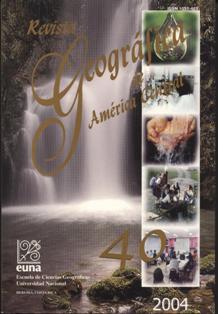MANEJO Y ORDENAMIENTO TERRITORIAL DE CUENCAS DE COSTA RICA. EL CASO DE LA MIÇROCUENCA DEL RÍO POÁS
Keywords:
Land use planning, watershed management, Poas river, Ordenamiento territorial, microcuencas, manejo de cuencas, río Poás,Abstract
La microcuenca del río Poás (ubicada entre el volcán Barva y el volcán Poás, hasta la confluencia con el río Grande cerca de la ciudad de Alajuela) posee un alto potencial para la formación de acuíferos de alta calidad. Por este motivo sus recursos naturales deben utilizarse adecuadamente. La mejor manera de lograr lo anterior es mediante la planificación del uso de la tierra. En esta investigación se plantea para ello el ordenamiento territorial y el manejo de cuencas. Para este propósito se realiza una zonificación mediante la cual se identifican las siguientes zonas: sin restricción de uso, uso restringido y uso muy restringido. La mayor parte de la microcuenca (64,6%) se encuentra en la categoríade “sin restricción de uso”. Sin embargo. se hace necesaria la intervención con rapidez en sectores ubicados en la parte alta de la microcuenca que se clasifican de “uso muy restringido”. En relación con el recurso hídrico, en la microcuenca en los últimos 14 años y de acuerdo con la metodología aplicada, se ha elevado la producción hídrica, específicamente en la escorrentía y la ganancia. En general aumentó en 1,6%.Abstract:
The Poas river micro watershed (located between the Barva and Poas volcanoes reaching the confluence of the Grande river near the city of Alajuela) has high potential for developing high quality aquifers. thus, its natural resources should be utilized adequately. This is best done by proper land use planning. In this study guidelines are presented for land use planning and watershed management. Land use is zoned or classified for the following uses: unrestncted use, restricted use, and highly restricted use. Most of the micro watershed (64.6 percent) is classified or zoned as ‘unrestricted use.’ However, urgent intervention is needed in the upper areas of the micro watershed cla.ssified as ‘highly restricted use.’ In the Iast l4years. according Lo the methodology applied, hydrologic production has increased about 1.6 percent. specifically in runoff and soil moisture surpius.
Downloads
How to Cite
Issue
Section
License
Proposed policy for journals offering Open Access
Authors publishing their works in the Journal acknowledge and agree to the following terms:
a) Authors retain the copyrights to their works and guarantee the Journal the right to be the first to publish their works, under the Creative Commons License Attribution-NonCommercial-ShareAlike 4.0 International, CC BY-NC-SA 4.0 International (https://creativecommons.org/licenses/by-nc-sa/4.0/deed.es), which allows others to share works upon complying with the acknowledgment of authorship and mention of the Journal as the original publisher of the work.
b) Authors are permitted to separately establish additional agreements for the non-exclusive distribution of the official edition of the work published in the Journal (for example, authors may desire to place the work in an institutional repository or incorporate it into a book that is to published elsewhere) so long they acknowledgment to recognize the Journal as the original publisher. The aforementioned additional agreements must respect the terms of the non-profit character and sharing philosophy of the original license (CC BY-NC-SA 4.0 International, https://creativecommons.org/licenses/by-nc-sa/4.0/deed.es).
c) Authors are encouraged to archive the post-print or editor/PDF version in Open Access repositories.






 REVGEO is licensed under https://creativecommons.org/licenses/by-nc-sa/4.0/deed.es
REVGEO is licensed under https://creativecommons.org/licenses/by-nc-sa/4.0/deed.es
.svg_4.png)

_(1).png)
_(1)_(1)_(1)_1.png)
(2)(1)(1)(1).png)
